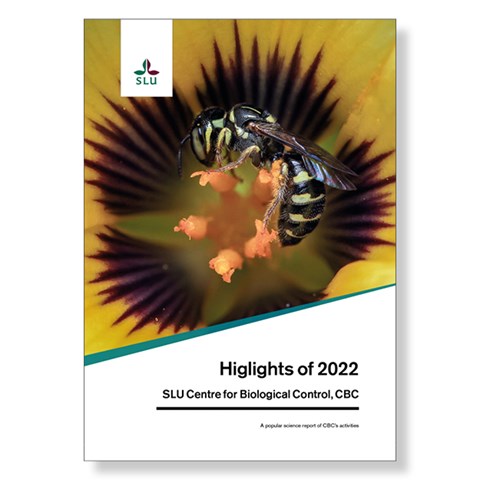“SLU has never had such a strong position in biological control as now”, says Johan Stenberg, the Director of the SLU Centre for Biological Control, CBC. Now, CBC’s annual popular science overview of the activities during 2022 is available.
CBC was established in 2011, at a time when chemical pesticides still dominated most crop protection strategies worldwide. Chemical control still dominates, but since 2011 we have seen a remarkable development in knowledge, methods, market expansion, governing regulations and use of biological control.
Importantly, since 2014 a European Union (EU) Directive has obliged all professional plant growers within the Union to apply the general principles of Integrated Pest Management. This Directive spurred many farmers to consider biological control as part of their strategies. A few years later (2020) the European Green Deal was launched, establishing the goal that use of chemical pesticides should be reduced by 50% by 2030.
– And this year (2022), the European Commission draft proposal for a new regulation on the sustainable use of plant protection products put forward that the 50% reduction should be achieved – to a major extent – by replacing chemical products by biological control. Thus, SLU Centre for Biological Control has never been more relevant than now, says Johan Stenberg, the Centre’s Director.
From push-pull in Rwanda to flower strips and vectoring technology
CBC’s annual report features some of the many exciting developments at CBC in 2022. Here, you can read about new research on push–pull technology leading to conservation biological control in Rwanda; new vectoring technology featuring flies and bumblebees; conservation biocontrol of weeds; optimization of flower strips; educational efforts; a royal award; and much more.
Read the report Higlights of 2022 - SLU Centre for Biological Control (pdf)
